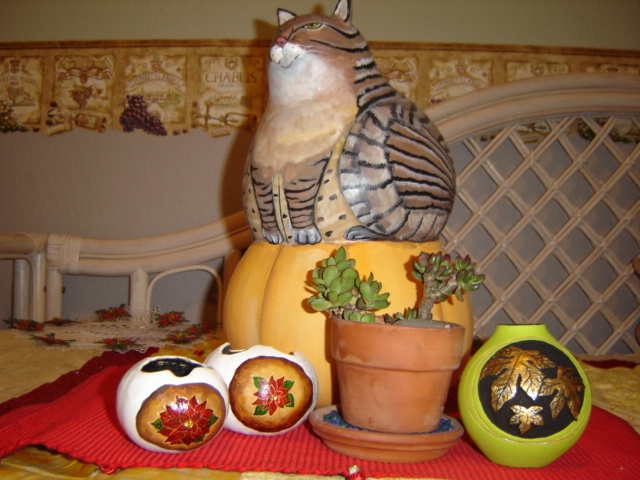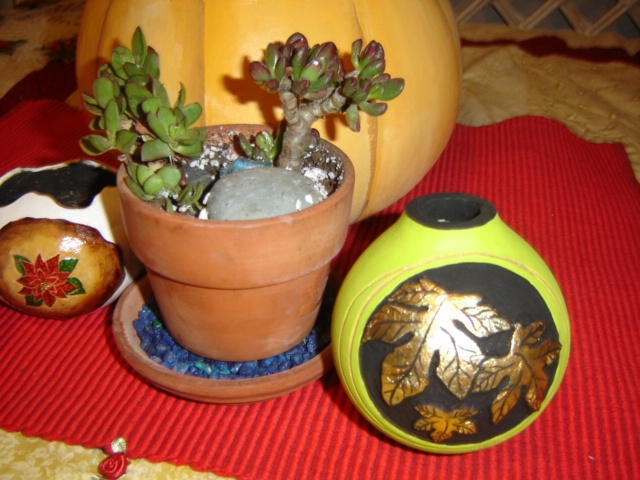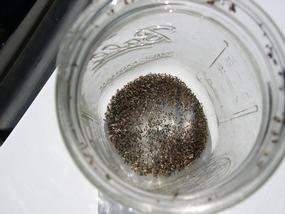UC Blogs
Herbs and Mystery
Do you like reading about herbs, even those you don’t use for cooking? Do you also like mysteries, you know – the “who done it” kind. Then I have the book(s) for you!
Susan Wittig Albert has written a series of mysteries featuring a character by the name of China Bayles. Each of these books has an herb in the title such as “Rueful Death” or “Lavender Lies”. I think you get the idea. But! In each of the books, the reader gets a good mystery, recipes using the featured herb – both in cooking and in lotions and in other ways. Set in the fictional town of Pecan Springs in the Texas Hill country, the heroine who just happens to own and operate a shop called Thyme and Seasons, selling dry herbs, fresh herbs, various oils and seasons combinations as well as jams, jellies, and various pestos.
In the “Lavender Lies”, the reader is treated to several recipes using lavender in cookies, iced teas and fruit juices, as well as historical uses of that herb. Did you ever think to drink hot lavender tea? In 1609, an herbalist named John Parkinson wrote a book Paradisi in Sole Paradisus Terrestris in which he wrote, "Lavender has an especially good use for all griefes and paines of the head and brain.” Also there is mention of bugloss (Alkanna tinctoria) used to dye wool and also women’s faces. The deep red color was long lasting and became a symbol of falsehood and deceit; the thought being that a woman who tinted her face could hardly be trusted to tell the truth. I wonder what the make-up folks would make of that idea??
Another tidbit of herbal lore in these books includes mention of a tree growing farther south in Arkansas and Texas called the toothache tree. Actually Zanthoxylum clavaherculis, this tree has bumpy bark is hot to taste and will help a toothache. I got so involve in so of the herbal remedies that I followed in my herb books.
Did you know cacti can be classified as herbs? In books of herbal lore, people have planted cacti to guard the house (no kidding!), but put the spines into a jar w/ rue and rosemary leaves and add rusty nails and tacks and then bury under your doorstep – you now have a powerful protective device to protect the house and contents!! Not to mention that the fruits of the “prickly pear” Opuntia ssp. make a delicious jam, jelly or salsa.
I’ve so enjoyed reading these well-written books packed with mystery, recipes and information about plants which I never would have considered to be “herbs” as well as plants and their parts which come to mind when the word “herb” is mentioned. It is amazing how the author combines all of these details in a “oh, by the way” style.
The Mosquito Man: Stepping Down
Most people have never served 38 consecutive years on an executive board that looks out for the health and welfare of two million people. But...
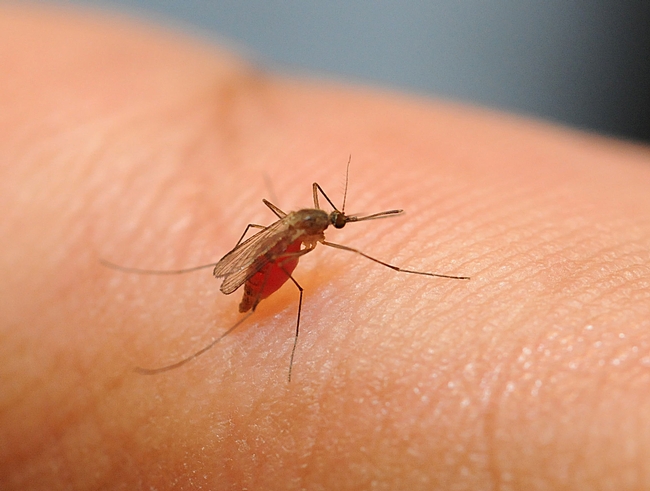
Culex quinquefasciatus, which can transmit West Nile virus. (Photo by Kathy Keatley Garvey)

Medical entomologist Robert Washino during his military years in the mid-1950s. This photo was taken in a lab south of Paris, France.
The Weather Outside is Frightful, but the Gourds are so Delightful.
I love this time of year. It's not quite winter, fall is technically not over yet.... It's time to craft! Of all the mediums to choose from, I always gravitate to gourds. You can paint, carve, stain, or leave them natural. Best of all, you can grow them too. There are so many shapes to choose from. Your limits are your imagination and your power tools. After harvest, you just, put them in a cool dry dark place, they dry out, and get a bit moldy. I know, gross, huh? But actually, that's exactly what you want, especially if you like the natural look. See, that molding process leaves very beautiful stains on the shell. You can also bind them with wire when they are growing so the mature gourd is imprinted. Little bowls make great catch-alls for those terrible little toys that get left out for you to step on in the middle of the night. Necessity and pain are the mothers of invention.
SD County may spray organic farms for eye gnats
San Diego County organic farmers fear losing the organic status of their crops and possibly the organic certification of their farms if county officials proceed with plans to spray pesticides to control an infestation of eye gnats, reported Steve Brown in Capital Press.
Eye gnats thrive in rich soil. They have become a major nuisance in parts of the county because they feed on mucus around humans' and animals' eyes.
At their Nov. 9 meeting, county supervisors directed staff to work with the Farm Bureau, the county health office, UC Cooperative Extension, residents and farmers to develop recommendations within 90 days.
"Organic growers are often heroes in the community, but this is different," said Farm Bureau executive director Eric Larson. "Neighbors are pretty upset."
The article cited UC Cooperative Extension as the source for the following facts about eye gnats:
- Native to California and other parts of the U.S.
- Prefer sandy soil with rich organic matter.
- Eggs and larvae overwinter in soil.
- No single natural predator.
- More live in towns than on farms.
Now That's Massive Weight Gain!
So you're thinking you're putting on a little weight during the holidays. Not to worry. Put it all in perspective by thinking about the larvae of...
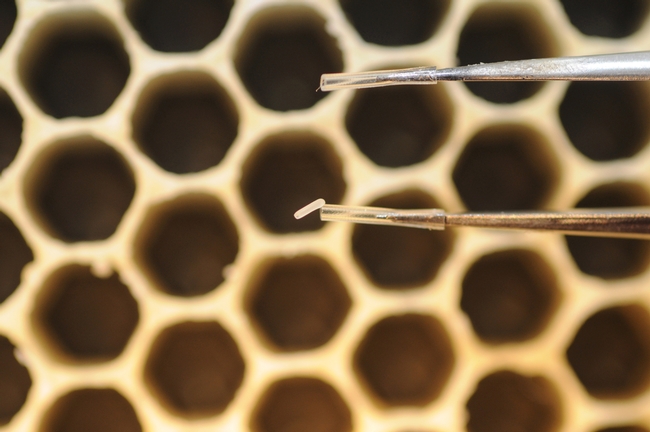
The tiny egg of a future honey bee weighs about 0.1 mg. (Photo by Kathy Keatley Garvey)
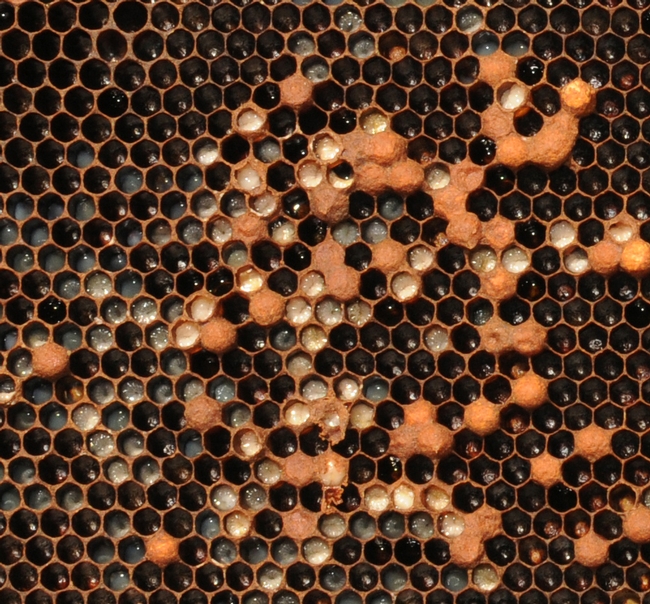
Larvae gain weight rapidly. A larva goes from 0.1 mg to around 120 mg. (Photo by Kathy Keatley Garvey)
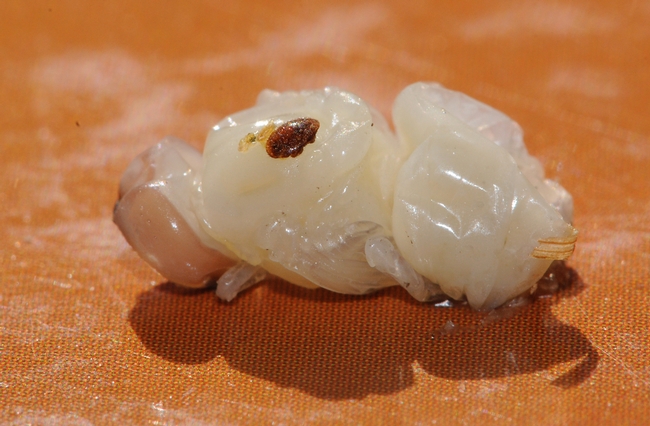
Close-up of a pupa with a Varroa mite. (Photo by Kathy Keatley Garvey)
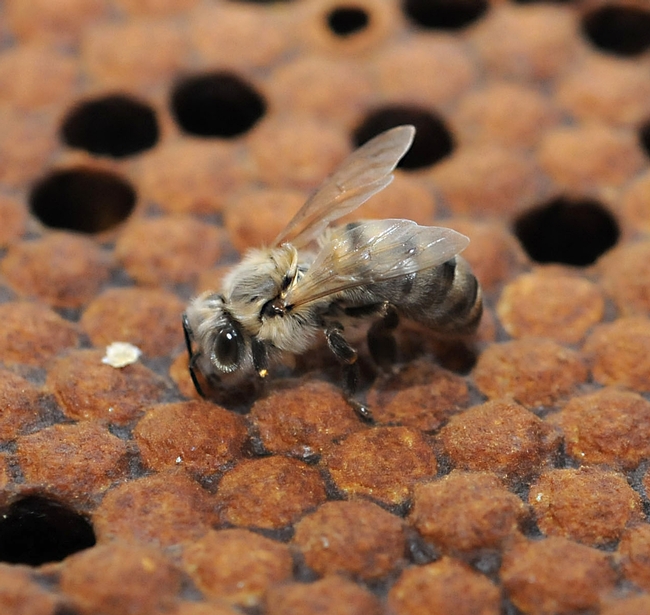
Newly emerged honey bee, just a minute old. (Photo by Kathy Keatley Garvey)


